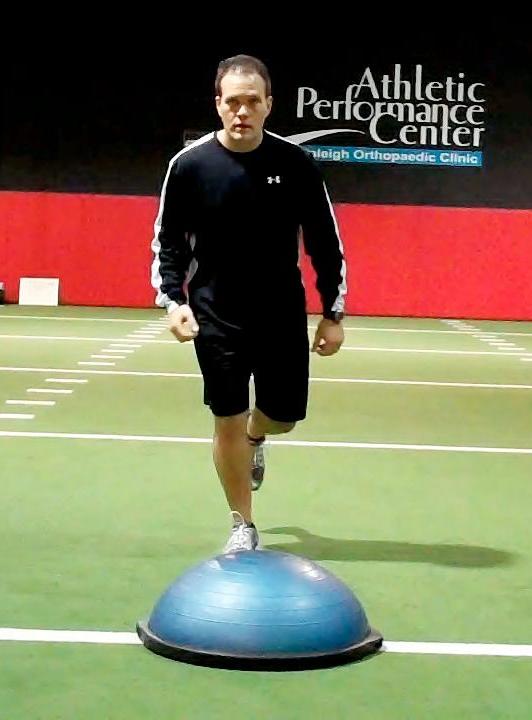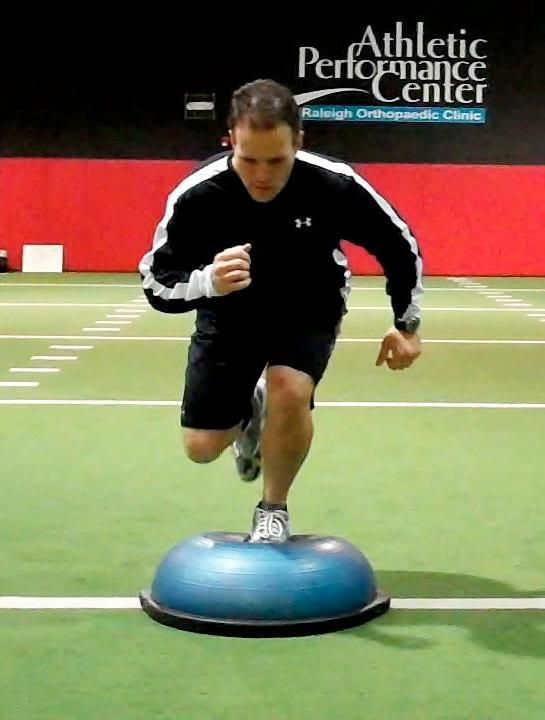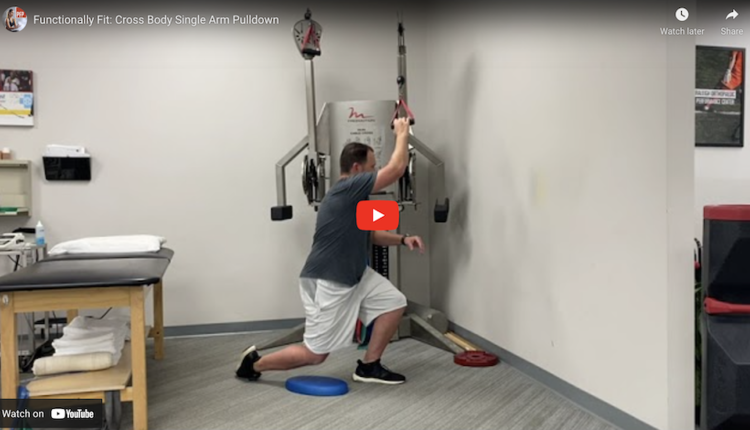![E-News-Column_2[1] E-News-Column_2[1]](https://cms-static.wehaacdn.com/fit--pro-com/images/E-News-Column_2-1-.2519.0.0.jpg)
In his latest column, Brian demonstrates anexercise that will help prevent ACL injuries and increase ankle stability, among other benefits.
See 'Related Resources' below for past Functionally Fits and other exercises and training tips.
Execution:
Stand approximately 2-3 feet behind the BOSU while balancing on the right leg. Next, drive off the right leg and hop forward onto the left foot (landing on top of the BOSU). Allow the knee and hip to flex to decelerate the movement and staying in line with the foot. Pause 2-3 seconds at the bottom and then step back off the BOSU. Perform 5-10 repetitions and then repeat on the other side. Complete 2-3 sets.
 |  |
Application:
This is an excellent ACL injury-prevention exercise. In addition, it facilitates proper deceleration mechanics, encourages glute/hamstring activation, and challenges ankle stability.
Many athletes struggle to avoid valgus collapse with deceleration and and cutting maneuvers. Another common mechanical error seen is landing or cutting too upright, thereby elevating risk for a knee injury. In order to land and maintain balance on the BOSU, the client must sufficiently shift his/her center of mass forward while achieving an appropriate amount of knee and hip flexion.
If you find that your clients cannot perform this exercise with good form or need a slower progression, consider the following steps:
- Stationary BOSU lunge (lead leg flexes and extends but foot remains on BOSU)
- Forward BOSU lunge and hold in down position (step back each time)
- Single-leg hop and stick on flat ground
Precautions or potential contraindications include ankle instability, meniscus pathology, poor balance, knee instability and/or limited experience with the BOSU. Once your client masters the forward version, you may elect to advance to a lateral version of this exercise to add difficulty and challenge frontal plane stability as well.
Brian Schiff, PT, CSCS (www.brianschiff.com) is a licensed physical therapist,respected author and fitness professional. He became a Certified Strength and ConditioningSpecialist (CSCS) in 1998. Currently, he serves as the supervisor at theAthletic Performance Center in Raleigh, NC. Brian presents nationally atseveral professional conferences and seminars on injury prevention, rehab andsport-specific training.














